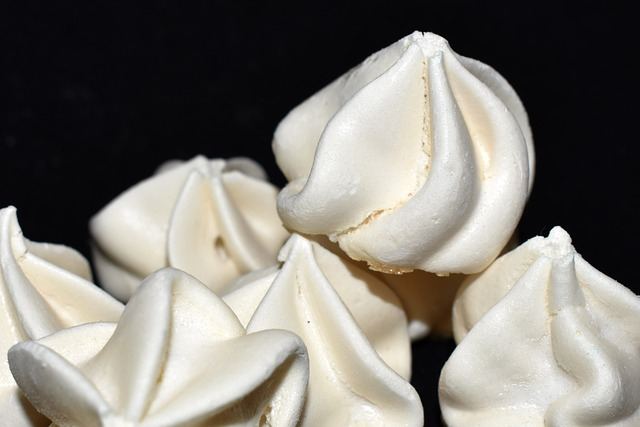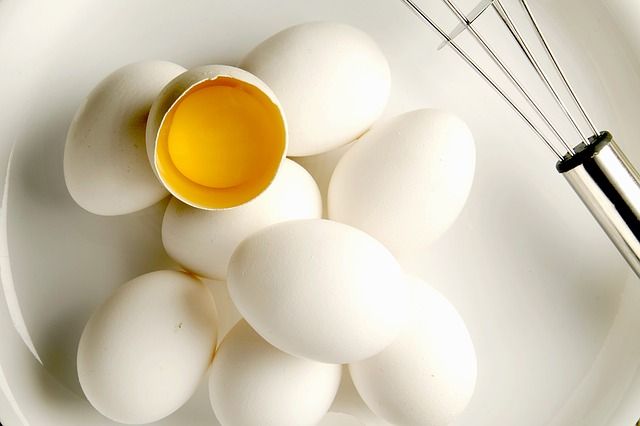Say you have a sweet tooth and are itching to sate your cravings, but don’t want to spend too much at your local bakery. So, you take up baking in the hopes of making all these wonderful treats for yourself instead!
While difficult at first, you start to get the hang of measuring and weighing, as well as all the baking terms that were so elusive to you before…until you see that a recipe calls for egg whites beat into “stiff peaks.”
Why separate the egg whites at all? Why not just use the whole egg? For starters, whipped egg whites are a versatile staple in baking.
Their fluffiness can be used to elevate any baked good, from helping cakes and souffles rise, lightening pancakes and waffles, and even sweetening it to turn into a delicious meringue.
Just how do you get your egg whites to reach this “stiff peak” stage? There are actually a couple of stages that whipped egg whites will reach before it gets to this final “stiff peak” stage, so let us take a look at them and their various uses here.
Contents
Before You Get to Stiff Egg Whites
Of course, you will need to separate the egg whites from your egg yolks first. It is advised to use either an egg separator or the “three bowl method.”
This method calls for three separate bowls, one to crack the egg over, one to put your yolks in, and another, larger one to put your egg whites in.
The first bowl is to prevent any yolks or other fatty substances from getting into your egg whites, as these will prevent the egg whites from being properly whipped. It is also advised to use a copper bowl for your egg whites should you decide to use the “three bowl method.”
If you do not have a copper bowl, any large bowl should suffice as long as you add a pinch of cream of tartar or salt to your egg whites. These will stabilize your egg whites to retain their shape when whipped in place of the copper.
After separating your egg whites, leave them out for about half an hour to allow them to reach room temperature. Room temperature egg whites will beat up higher and faster than cold egg whites.
Once your egg whites are the appropriate temperature, it’s time to get whipping!
How to Whip Egg Whites
You can choose to beat your eggs by hand, or with an electric mixer if you like. If you choose to do it by hand, be sure you whip vigorously in big up-and-down circular motions to beat as much air as you can into your egg whites.
If you choose to use an electric mixer, be sure you have it on a medium speed to allow you to watch your egg whites’ progress. Also, use a rubber spatula to scrape the sides of your bowl while you mix.
Soft Peaks
Soft peaks are the first stage egg whites will reach as they’re whipped. It is best described as a foamy mixture where a peak will form when you lift your preferred mixing tool, but that peak will immediately droop back into the beaten egg whites soon after.
Soft peak egg whites are used to lighten dishes, typically pancakes or waffles, and give them a fluffier quality.
Firm Peaks
Firm peaks are the next stage egg whites will reach. As its name suggests, they are firmer than soft peaks, and will keep their peak shape without drooping when you lift your mixing tool from the egg white mixture.
Keep in mind that soft peaks can easily turn into firm peaks depending on how long you mix your egg whites, so if you do not want firm peaks, pay close attention to your mixture.

Firm peaks are an in-between stage between soft peaks and stiff peaks, making them firmer than soft peaks, but softer than the last stage of stiff peaks.
Some recipes will call for this firm state, but most will want you to use either soft or stiff peaks.
Stiff Peaks
Stiff peaks are the last stage you want the egg whites to be. If you continue mixing them past this state, they will turn dry, and the protein will collapse and break apart in the bowl, leaving a gross mixture of what used to be egg whites and some foam.
Stiff peaks, much like firm peaks, will retain their pointed shape once you remove your mixing tool from the mixture.
The difference between firm and stiff peaks, however, is the length of which they will retain their shapes. Firm peaks will settle back into the mixture if left alone, whereas stiff peaks will stay up no matter if you turn it upside down or mix it a little more.
Stiff peaks will also create a lighter, fluffier texture in your baked goods.
Here’s a video showing what each peak stage looks like.
Now that you know how to whip up stiff peaks, good luck in the rest of your sweet ventures, aspiring baker!
Do you have any tips on how to whip egg whites?






